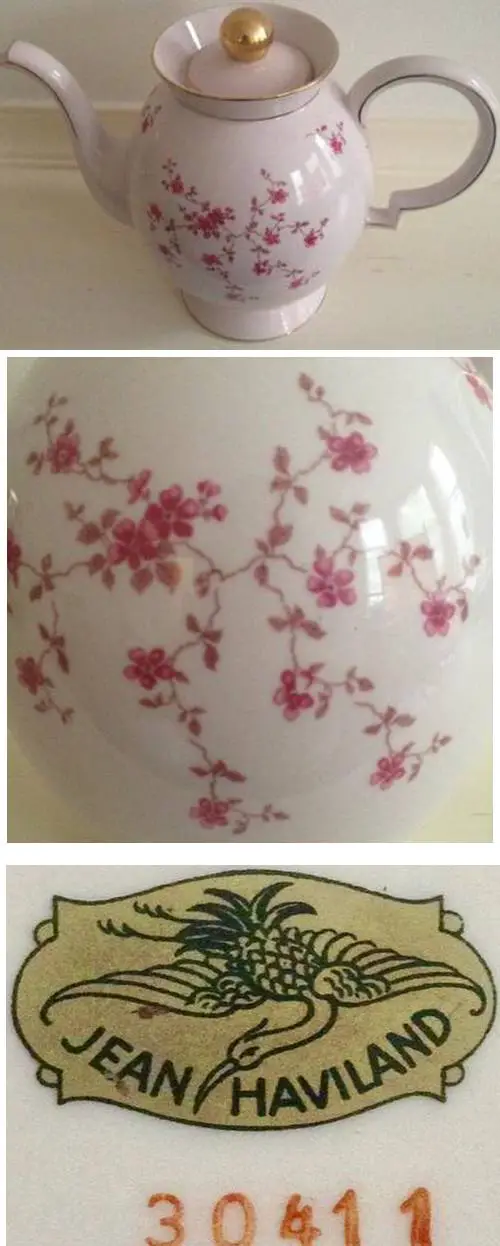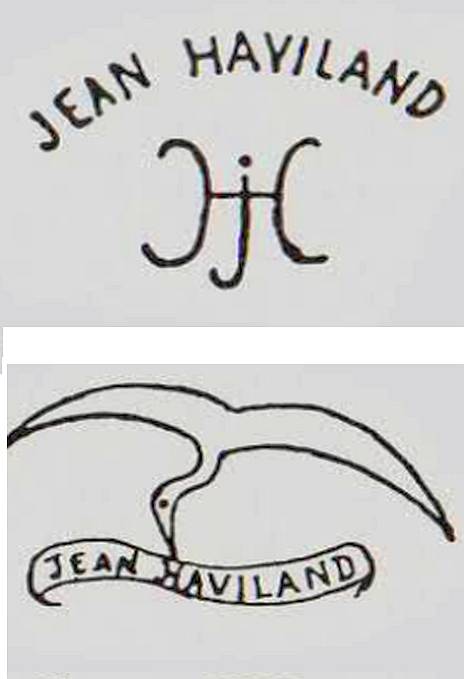EVOLUTION OF HAVILAND CHINA DESIGN Author
Reviews This Page
by Nora Travis, Author, Haviland China Expert and Dealer
(City of Orange, California)
Regarding the Haviland web page you wrote, here is a list of additions and a couple of corrections to your info.
I might take some tips from your website. Glad you contacted me.
David Haviland was one of 7 brothers who owned a china shop in New York City. According to Haviland legend a woman came in the shop looking to replace a broken cup. David, ever the businessman, saw that this fine porcelain might be the way to make more money. He tracked it down to Limoges.
He tried to get the French to make the china he wanted but they didn't want to comply, so he packed his wife and son, Charles Edward, up and sailed to stay with Quaker friends in Foecy, the Pilluvyts who were also porcelain manufacturers.
He bought property in Limoges and built a house and factory. While he was waiting to get the kilns built he subcontracted the making of porcelain and decorated the porcelain for sale. When the kilns were ready he made and decorated both.
Your story about the workers and guilds was correct. In 1865 the factory, which had been owned by David and the brothers, closed and reopened owned only by David Haviland and called Haviland & Company.
Charles Edward Haviland took over running the company shortly after that and sent Theodore to America to market the product.
When David died Theodore was called back to France but did not like working under his brother. In 1893 he left the company to form his own, Theodore Haviland Company. (You mentioned the Charles Edward Company - that was Haviland & Company). The company did not split, Theodore left.
The Autieul studio in Paris run by Charles Edward was for the making of pottery. The Impressionist influence was very heavy on the pottery. The early porcelain dinnerware was influenced by the Japanese movement.
Charles Edward Haviland was very bright but very set in his ways. He did not give his son, George, much training in running the company so when Charles E. died, George had a hard time keeping it going and with fires at the factory and the Great Depression, Hav & Co folded in 1931.
The Charles Field Haviland company bought the right to the company but sold them to Theodore Haviland in 1941. So Theo Hav became Haviland & Company once again. Theodore Haviland tutored his son William so when Theodore died he was able to continue the company. The company was finally sold in 1972 to a conglomerate and is still called Haviland & Company not Haviland Limoges. They are still located in Limoges and are selling a complete new modern line of dinnerware and artware.
Charles Field Haviland was the son of Robert, as you stated. He came to Limoges in 1852
In 1881 he retired and the firm of E. Gerard, Dufraisseix et Morel took over management and he retained a silent partnership in the firm (backmark CFH/GDM). In 1900, Morel left and Abbott came aboard and the initials on back of china became CFH/GDA. Robert Haviland was the grandson of CFH. He started his own business Haviland et La Tanneur in 1924 with his brother-in-law. He was able to purchase the CFH backmark from Gerard & Abbott in 1941 and with C.Parlon in 1949, established the firm of Robert Haviland et C. Parlon.
Johann Haviland was started by Jean Haviland, a son of Charles Edward Haviland. Started in 1907 in Bavaria. Richard-Ginori bought company in 1924 and sold it in 1933. In 1937 Rosenthal bought it. Now being produced in Taiwan.
Hope this helps in correcting a few omissions. I am doing a lecture on Charles Field Haviland at the Haviland Conference in Hartford, CT this June.
Regards,
Nora Travis
http://www.angelfire.com/biz2/havilandchina/index.html
email:Travishrs@aol.com
ps. I used to paint from time I was 16 but since I have been in the Haviland business have not had much time to devote to it. I have had an inner longing to do sculpture but have not found any classes around or the time to research.
pps. Come visit my shop downstairs at the Orange Circle Antique Mall, 118 S. Glassell, in the city of Orange, California. This is the largest supply of Haviland china in Orange County. The mall hours are 10am to 6pm daily. For those that inquire, I usually am not there except to restock. If you have questions regarding your pattern, please call or e-mail me.
Nora Travis Author of "EVOLUTION OF HAVILAND CHINA DESIGN" which shows with beautiful color photographs the transition of designs from the early Japanese influence and multiflorals into the Art Nouveau and Art Deco styles, from the years 1850 through 1970. With 567 color photos it shows many patterns and shapes of Haviland. Backmarks and price guide also. For a personally autographed copy, please send $49.95 plus $2.95 shipping. http://www.angelfire.com/biz2/havilandchina/index.html.
"HAVILAND CHINA-THE AGE OF ELEGANCE" contains over 400 color photographs and details the history of the Haviland family, how Haviland was made and the last third of the book shows what pieces were used for breakfast, lunch, afternoon tea and 15 courses of dinner. It is in its third revised printing with updated price guide. You may order a personally autographed copy by sending $39.95 plus $2.95 shipping to the address below. California residents please add 7.75% sales tax.
Comments for EVOLUTION OF HAVILAND CHINA DESIGN Author
|
||
|
||
|
||
|
||
|
||
|
||
|
||
|
||
|
||




